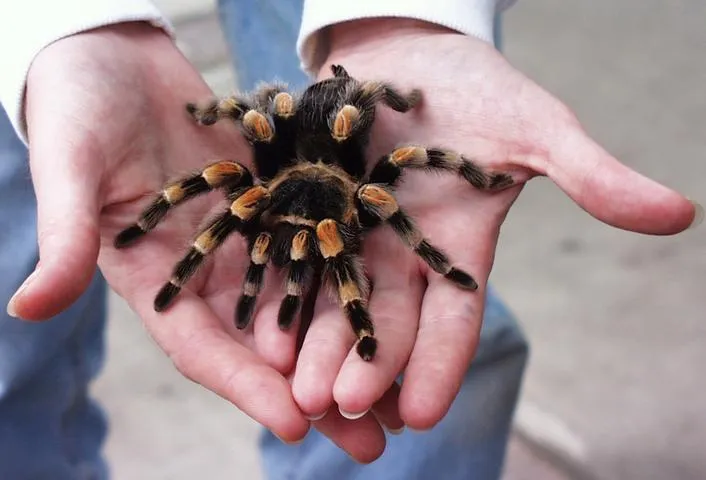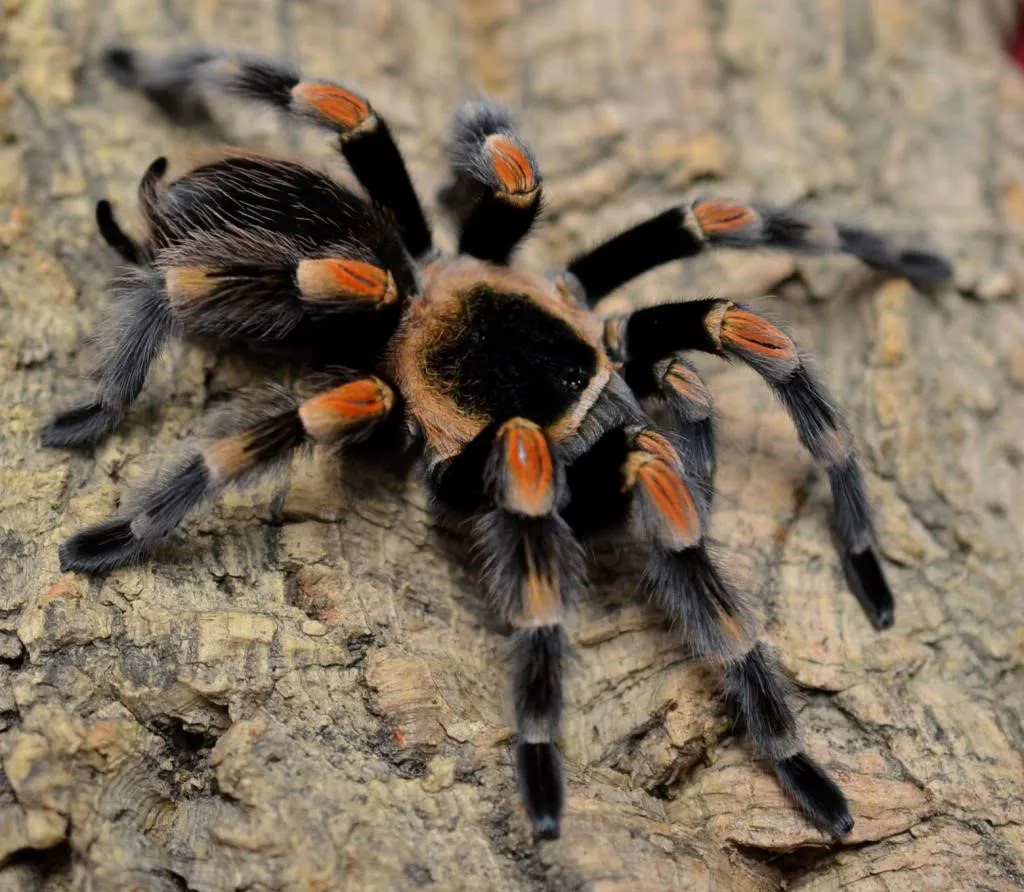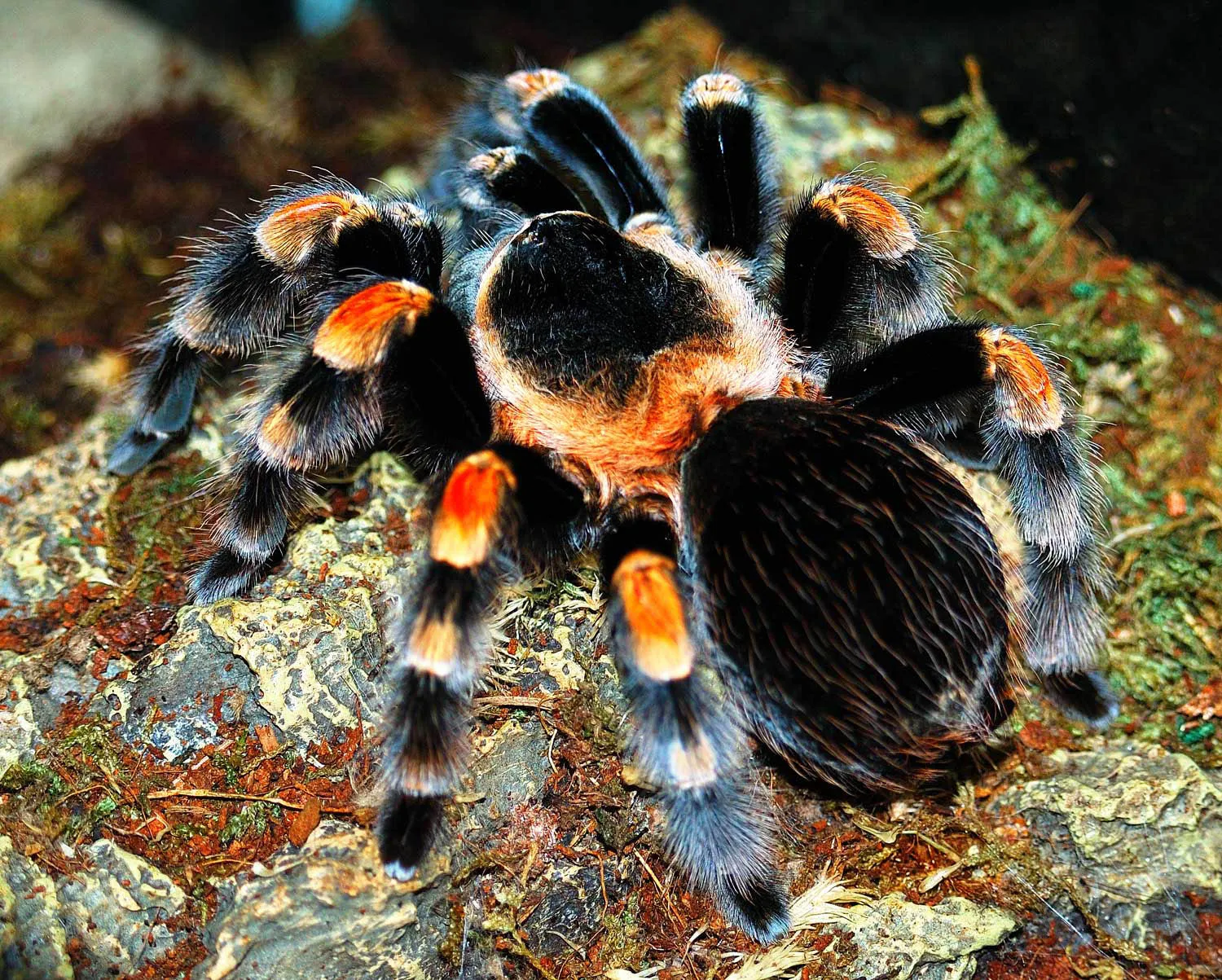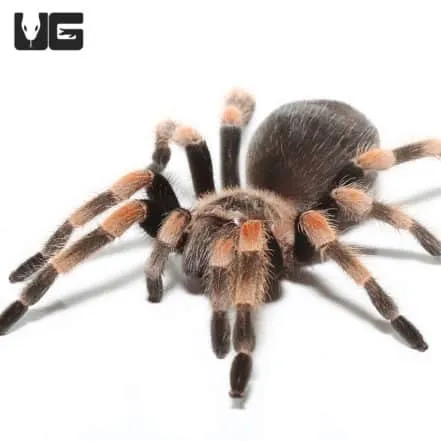Mexican Red Knee Tarantula Fangs Introduction
The Mexican Red Knee Tarantula (Brachypelma hamorii), a beloved pet among arachnid enthusiasts, captivates with its striking coloration and relatively docile temperament. While these spiders are often admired for their beauty, a closer look reveals a fascinating aspect of their biology their fangs. Understanding the fangs of the Mexican Red Knee Tarantula is essential for anyone considering keeping one as a pet or simply fascinated by these creatures. These fangs are not just tools for biting; they are intricate structures playing vital roles in the tarantula’s survival, from capturing prey to defending against predators. This article delves into the specifics of Mexican Red Knee Tarantula fangs, exploring their anatomy, function, and some intriguing facts about them. We will also cover the important aspects of caring for these amazing creatures.
What are Tarantula Fangs
Tarantula fangs, technically known as chelicerae, are specialized mouthparts that serve as the primary tools for capturing and subduing prey. These fangs are not the same as the mandibles found in other arthropods; instead, they are modified appendages located near the tarantula’s mouth. The fangs are connected to venom glands, allowing tarantulas to inject venom into their prey. This venom is not only used to paralyze the prey but also to begin the digestive process. The fangs’ design is crucial for their function, allowing the tarantula to pierce the exoskeleton of insects and other small animals. The size and shape of the fangs can vary depending on the tarantula species, with some having larger, more robust fangs for tackling bigger prey. The fangs are essential for the survival of the tarantula, playing a key role in both feeding and defense.
The Anatomy of a Tarantula Fang

A tarantula fang is a complex structure composed of several parts. At its core, the fang is a hardened, chitinous projection connected to the tarantula’s chelicerae. The chelicerae are the two appendages that extend downward from the front of the cephalothorax (the combined head and thorax). Within each fang, there’s a channel or groove that carries venom from the venom glands, located in the chelicerae, to the tip of the fang. Muscles control the movement of the fangs, allowing the tarantula to strike and inject venom with precision. The fang’s outer surface is covered in sensory hairs, which help the tarantula detect the presence and position of prey. The fang’s tip is extremely sharp, designed to penetrate the exoskeletons of insects and other animals. Understanding the intricate anatomy of the fang provides insight into how tarantulas effectively capture and subdue their food.
The Function of Fangs in Tarantulas
The primary function of tarantula fangs is to capture, subdue, and consume prey. When a tarantula encounters potential prey, it uses its fangs to strike swiftly, injecting venom into the victim. The venom quickly immobilizes the prey, allowing the tarantula to safely handle it. In addition to capturing prey, fangs also play a crucial role in defense. If threatened, a tarantula can use its fangs to bite and inject venom as a defensive mechanism. While the bite of a Mexican Red Knee Tarantula is not generally considered life-threatening to humans, it can be painful. The fangs are also used in mating rituals, where males use them to hold the female’s fangs during the process. In summary, the fangs of a tarantula are indispensable tools for survival, contributing to its ability to hunt, defend itself, and reproduce.
Top 5 Facts About Mexican Red Knee Tarantula Fangs
Fact 1 The Size and Shape of the Fangs

Mexican Red Knee Tarantulas have relatively large fangs compared to some other tarantula species, which can be up to half an inch long. The fangs are typically curved and pointed, designed to effectively pierce the exoskeletons of their prey. Their size and shape are well-suited for capturing a variety of insects, such as crickets, mealworms, and roaches, which make up the bulk of their diet. The robust nature of these fangs also allows them to defend against potential threats. The size and shape of the fangs can vary slightly between individual tarantulas and are influenced by factors like age and diet. Observing the fangs of a Mexican Red Knee Tarantula provides a direct appreciation of their hunting prowess.
Fact 2 The Venom Delivery System
The venom delivery system of the Mexican Red Knee Tarantula is a marvel of natural engineering. Each fang has a channel that carries venom from the venom glands located in the chelicerae. When the tarantula bites, the fang pierces the prey, and the venom is injected through this channel. The venom acts quickly to paralyze the prey, making it easier for the tarantula to consume. The venom also contains digestive enzymes, which start breaking down the prey’s tissues from the inside. The efficiency of this venom delivery system is vital to the tarantula’s survival, ensuring a quick and effective means of subduing prey. Although the venom is not typically lethal to humans, it can cause localized pain, muscle cramps, and swelling.
Fact 3 The Use of Fangs for Defense
Mexican Red Knee Tarantulas use their fangs as a primary means of defense when they feel threatened. If a potential predator or other threat approaches, the tarantula may rear up, displaying its fangs as a warning. If the threat persists, the tarantula will strike, injecting venom. This bite is usually a last resort, and the tarantula will often try to escape or use other defensive behaviors like flicking urticating hairs first. The defensive use of fangs is a critical component of their survival strategy, deterring predators and protecting the tarantula. While the bite is not generally life-threatening to humans, it can be painful and cause localized symptoms. It’s important to handle these tarantulas with care and respect their natural defensive mechanisms.
Fact 4 The Role of Fangs in Feeding

The fangs of the Mexican Red Knee Tarantula are crucial for feeding. When the tarantula hunts, it uses its fangs to pierce and grasp its prey, injecting venom to immobilize it. Once the prey is subdued, the tarantula uses its fangs and chelicerae to break down the prey’s exoskeleton. The tarantula then releases digestive enzymes onto the prey, which begin to liquefy the internal tissues. The tarantula then sucks up the liquefied nutrients, leaving behind the indigestible exoskeleton. The fangs are thus essential tools, not only for capturing but also for the physical manipulation of the prey during feeding, making the whole process possible. The effectiveness of the fangs is apparent in how quickly and efficiently tarantulas consume their meals.
Fact 5 The Regrowth of Tarantula Fangs
An amazing aspect of tarantula biology is their ability to regrow fangs after molting. During the molting process, the tarantula sheds its exoskeleton, including its fangs. New fangs form as part of the new exoskeleton that develops beneath the old one. This means that a tarantula that has lost a fang or has a damaged one will have a completely new set after molting. This regeneration capacity is a significant survival advantage, as it ensures the tarantula maintains its hunting and defensive capabilities. The frequency of molting depends on the tarantula’s age and growth rate, with younger tarantulas molting more often than adults. The regrowth of fangs is an example of the remarkable resilience of these creatures.
Caring for a Mexican Red Knee Tarantula and its Fangs
Caring for a Mexican Red Knee Tarantula involves several important practices. Providing a suitable enclosure with appropriate substrate, such as coconut fiber or peat moss, is essential to promote their health. The enclosure should also have proper ventilation and a water dish for hydration. Temperature and humidity levels should be carefully maintained to mimic their natural habitat. It is important to avoid handling your tarantula unless necessary, as it can cause stress and potential bites. When handling, do so gently and keep the tarantula close to the ground. Regular feeding with insects such as crickets and mealworms is important. Proper care ensures the well-being of your tarantula. Avoid touching the fangs directly, and watch for the signs of molting which will involve the growth of new fangs. The careful owner provides a safe environment.
Conclusion

The fangs of the Mexican Red Knee Tarantula are truly remarkable tools, essential for the tarantula’s survival. From capturing prey to defending itself, these specialized mouthparts play a vital role in the life of this fascinating arachnid. Understanding the anatomy, function, and the amazing ability of fangs regrowth enriches our appreciation for these creatures. If you are considering keeping a Mexican Red Knee Tarantula, be sure to learn as much as you can about their biology and provide appropriate care. The knowledge of the fangs adds another layer of intrigue to the already fascinating world of tarantulas.
